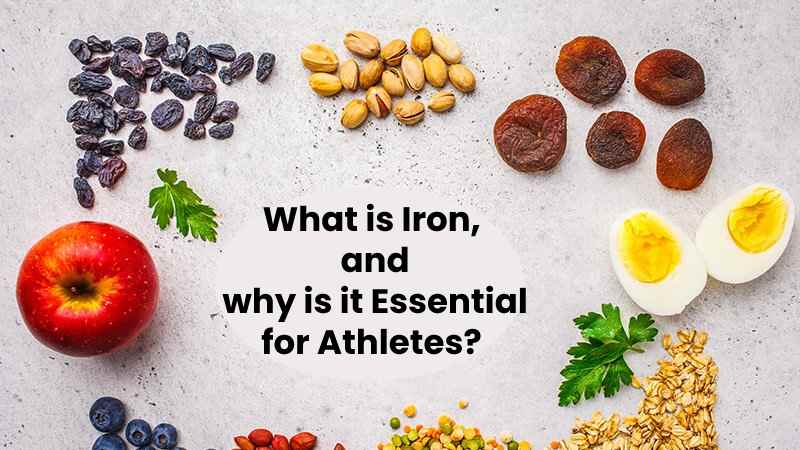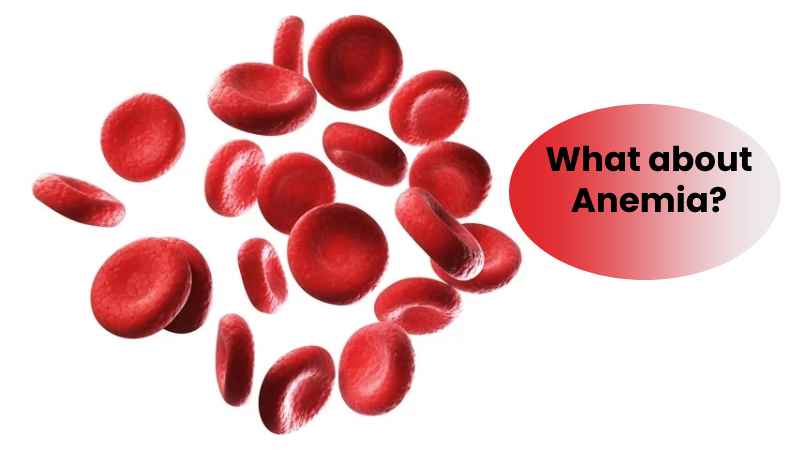Female Runners Ferritin
Female Runners Ferritin, This blood marker warns that your body may be dangerously low in iron. It is common to associate poor performance with low iron. “I had a bad race. Maybe I should check the iron?” “I feel tired during exercise – could it be my iron levels?” I get these questions from the athletes I work with a lot.
And while countless variables can contribute to poor performance or fatigue, iron is essential for runners. If your iron levels are low and you don’t do anything about it, you will eventually experience a negative impact on your performance. So here’s what you need to know about iron and ferritin levels.
Table of Contents
What is Iron, and why is it Essential for Athletes?

Female Runners Ferritin, Iron is an essential mineral found in red blood cells that is important for transporting oxygen in the blood and muscles, energy production, cognitive function, and immunity. Unfortunately, many of us worry about our levels because iron remains lost in many ways: through urine, the menstrual cycle, blood loss in the gastrointestinal (GI) tract, sweat loss, and the breakdown of red blood cells due to impact. Our kicks. In addition, chronic use of non-steroidal anti-inflammatory drugs (e.g., ibuprofen, naproxen) – often used by athletes – and antacids can also lead to iron deficiency.
Iron levels are significant for female athletes: According to an article in the European Journal of Applied Physiology, iron deficiency is around 15 to 35 per cent in female athletes and 3 to 11 per cent in male athletes. In addition, women, endurance runners, vegans, vegetarians, and athletes with low energy availability are at increased risk of iron deficiency.
What are Some Key Symptoms of Iron Deficiency?
Classic symptoms of iron deficiency, with or without anaemia, include lethargy, fatigue, negative mood, and difficulty concentrating. However, runners may notice symptoms that mimic overtraining, reduced work capacity during training, impaired response to exercise, and ultimately poor performance. A blood test is the only way to tell if low iron is to blame.
What about Anemia?

Anaemia is when the blood does not have enough healthy red blood cells. Although iron deficiency anaemia is the most common type, it is one of many different types. It is possible to be iron deficient before being diagnosed with anaemia. However, iron deficiency will lead to anaemia if no measures remain taken as the body depletes its iron stores, known as ferritin.
So what about Ferritin Levels?
Female Runners Ferritin, as mentioned above, is a crucial blood marker that indicates iron storage. There is a wide range for what is considered a “normal ferritin level,” ranging from 12 to 300 nanograms per millilitre (ng/ml).
“However, linking ferritin levels (e.g., levels above 35 ng/ml) directly to performance is very challenging because there are so many things that affect performance,” Trent Stellingwerff, PhD, senior advisor for the Canadian Sport Institute Pacific, told Runner’s World.
High levels of iron can be very toxic to the liver and heart. “Our goal is ferritin greater than 35 ng/ml and clinically normal haemoglobin, but we also appreciate individual standards for athletes,” says Stellingwerff.
Thus, the current routine evaluation of iron deficiency should include the following blood markers: ferritin, haemoglobin, and transferrin saturation. Iron deficiency occurs in three stages using the following ferritin levels suggested in a recent article in athletes:
- Iron deficiency/depletion: ferritin less than 35 ng/ml, haemoglobin and transferrin levels will remain expected. There is little evidence to suggest that you will experience any fatigue, but correcting and preventing iron deficiency anaemia is essential.
- Iron deficiency without anaemia: ferritin less than 20 ng/ml, low transferrin, and normal haemoglobin. You may experience some of the above symptoms that negatively affect performance.
- Iron deficiency anaemia: ferritin less than 12 ng/ml, low transferrin, and haemoglobin. Above you will notice key symptoms, including impaired endurance performance.
How often should I have my Iron Levels Checked?
As suggested in a recent 2019 article published in the European Journal of Applied Physiology, high-risk runners should remain screened regularly, and considerations for the frequency of blood iron screening remain based on the athlete’s history. Although not exhaustive, some guidelines are given below:
Annually: runners without a history of iron deficiency, without fatigue after a long period of rest
Twice a year: previous history or low ferritin (grade 1 iron depletion), female, intention to increase training volume or training at altitude within the next 12 months
Quarterly: any recent history of iron depletion/deficiency, vegetarians/vegans, individuals with any evidence of low energy availability, high training volume, and fatigue/lethargy, planning to train at altitude within the next six months.
Female Runners Ferritin, an acute phase reactant protein, can be falsely elevated with inflammation after vigorous exercise. Therefore, avoiding muscle damage or vigorous exercise for two to three days before a routine blood test is essential. Other suggestions for standardization include testing first thing in the morning and a well-hydrated state.
Should Runners Traveling to altitude be Concerned about the Level?
Female Runners Ferritin, Training at low to moderate altitudes provides an environmental stimulus to increase red blood cell count and improve sea-level performance. However, with this increase in red blood cell production comes an additional need for iron. A review article by Stellingwerff et al. (2019) suggests checking iron status before altitude training to ensure levels are in the optimal range before departure.
“However, if a runner is going to high altitude for a race or a short period, the impact of iron is much less,” says Stellingwerff. “Although all endurance athletes should strive to have ferritin levels well within the healthy and normal range.”
How can Runners Optimize Iron Absorption?
You may have a solid iron-rich refuelling plan, but are your nutrient timing and food combinations on point? Iron absorption can remain impaired after exercise due to increased levels of hepcidin, a hormone released by the liver that regulates the ability to absorb or recycle iron.
Inflammation remains thought to be a potent regulator of hepcidin. According to an article published in Sports Medicine in 2020, hepcidin increases approximately three to six hours after exercise and increases toward the end of the day.
Thus, the optimal timing for iron absorption is 30 minutes after morning training, when hepcidin levels are low. Runners can optimize iron absorption by using the following strategies:
Avoid dairy products, coffee, and tea (which reduce iron absorption) an hour before or after meals.
Cook with a cast iron pan or a product like Lucky Iron Fish, which may be a cost-effective strategy for increasing iron content in conjunction with other methods, according to one study.
Eat foods rich in “heme iron” such as beef, eggs, tuna, lamb, and kangaroo (if available)
Improve absorption of “non-heme iron” sources (almonds, figs, apricots, beans, green leafy vegetables, tofu, dark chocolate) by pairing with heme-rich seeds and ~50 milligrams (mg) of vitamin C (1/2 cup pineapple, strawberries, broccoli or red peppers).
If you take an iron supplement (prescribed by your doctor), take it with a meal rich in vitamin C. New evidence suggests that every other day dosing is as effective as daily for raising ferritin levels and is better tolerated by runners with sensitive guts.
Conclusion:
Finally, not every lousy race indicates you have low iron. But it’s a good idea to check before taking any iron supplements. There is no evidence that higher ferritin levels are better (e.g., target 300). And supplementation is unlikely to improve performance in non-exhausted runners. Therefore, iron supplementation should only remain done under the supervision of a doctor.
Related searches
low ferritin in female athletes
ideal ferritin levels for runners
Female Runners Ferritin
high ferritin levels in athletes
optimal ferritin levels for athletes
iron deficiency in female runners
iron deficiency in runner’s symptoms
optimal ferritin levels for female athletes
ferritin levels in female distance runners

